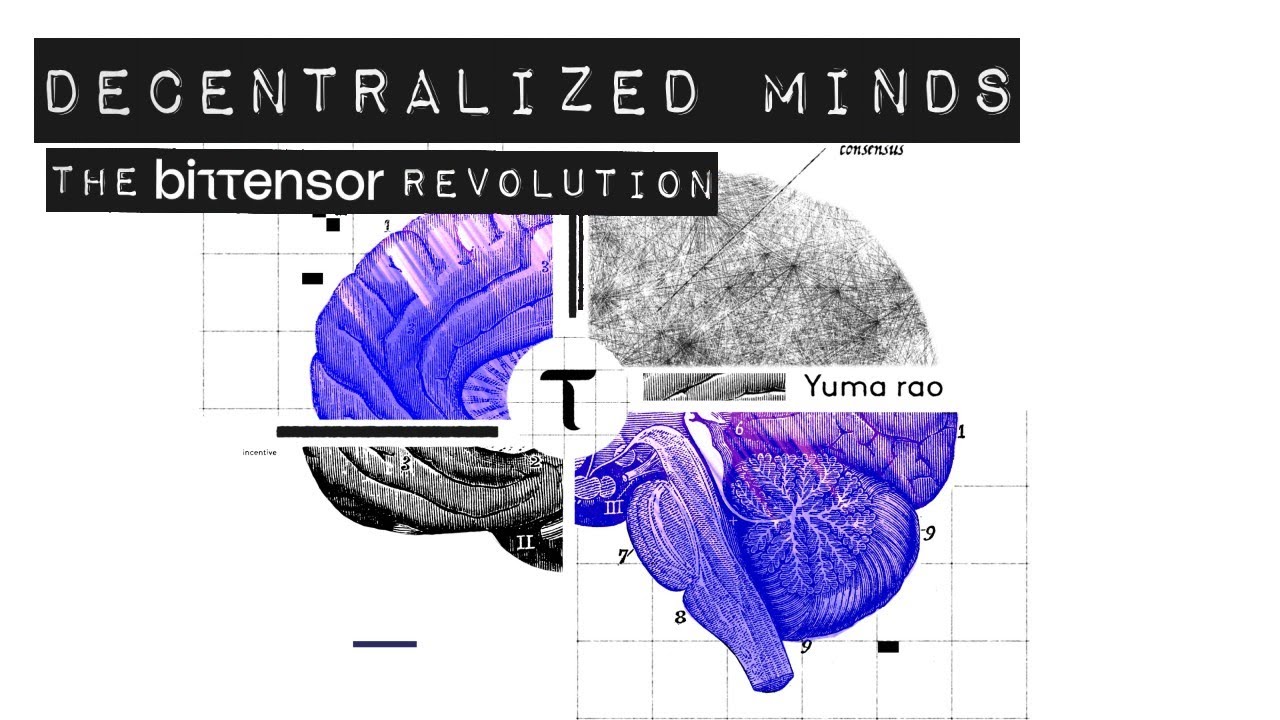DYNAMIC $TAO Explained Bittensor's NUCLEAR UPGRADE That's About to MELT FACES! 💥💰
Summary
TLDRDynamic TOA drives innovation within the BitTensor ecosystem by creating subnet-specific tokens backed by local currency. Subnets operate like franchises, with tokens reflecting their value. Poorly performing subnets are replaced to ensure continuous improvement. Dynamic TOA supports liquidity and rewards miners and validators, ensuring security and efficiency. Users can stake tokens into subnets, benefiting from their growth. This decentralized system encourages healthy competition, innovation, and long-term sustainability, making owning TOA akin to holding a stake in a constantly evolving digital city with real utility and growth potential.
Takeaways
- 🏙️ Dynamic TOA functions like a city where buildings (subnets) must prove their usefulness, and underperforming ones are replaced with better ones.
- 💱 Subnet-specific tokens are used in the BitTensor ecosystem, reflecting the value and success of each subnet or 'franchise.'
- 🏗️ Subnets with the lowest 30-day average price are deregistered, promoting healthy competition and constant improvement.
- 🔄 Dynamic TOA injects new tokens into liquidity pools with 50% going to the pool and 50% to miners and validators, ensuring smooth transfers and rewards.
- 💡 Subnets must be efficient and secure to maintain their place in the network, driven by Dynamic TOA's competition model.
- 🔐 Yuma Consensus V2 adds a layer of security, making it harder to compromise subnets with valuable tokens.
- 🏦 The system features a hard cap of 42 million TOA tokens, with half dedicated to liquidity and the other half to rewards.
- 📊 Users can stake TOA into subnets, buying a portion of the subnet's dynamic tokens, and unstaking swaps them back into TOA.
- 📈 Subnet token prices are determined by supply and demand in liquidity pools, and subnets are regularly evaluated for performance.
- 🚀 Poor-performing subnets are replaced by more innovative ones, ensuring continuous improvement and innovation within the BitTensor ecosystem.
Q & A
What is the core concept behind Dynamic TOA in the BitTensor ecosystem?
-Dynamic TOA is a system that creates subnet-specific tokens, each reflecting the value and success of a particular subnet (similar to a franchise of a big brand). It drives continuous improvement by ensuring only the most efficient and innovative subnets remain active in the network.
How do subnets in the BitTensor ecosystem work?
-Each subnet in the BitTensor ecosystem operates like a franchise with its own local currency (subnet-specific tokens). These tokens are backed by the subnet's performance, and subnets compete for their place in the network based on their market demand and efficiency.
What happens to subnets that underperform in the BitTensor ecosystem?
-Subnets that perform poorly, determined by the lowest 30-day moving price average, are deregistered and replaced by more innovative and efficient subnets. This ensures constant competition and improvement.
How does the currency in the Dynamic TOA system fluctuate?
-The currency used to rent or buy space in the network (TOA tokens) fluctuates in value based on the desirability of the subnets. As more people stake TOA into successful subnets, the value of the subnet's token increases.
What is the role of liquidity pools in the Dynamic TOA system?
-Liquidity pools in Dynamic TOA facilitate smooth transfers and exchanges between TOA tokens and subnet tokens. 50% of new tokens are injected into these pools, while the other 50% is used to reward miners and validators, ensuring sufficient liquidity for trading.
How does staking TOA work in this ecosystem?
-Users can stake their TOA into a subnet, which essentially buys them a portion of the subnet's dynamic tokens. When unstaking, users swap their dynamic subnet tokens back into TOA, a process governed by the liquidity pools that manage the exchange rates.
What ensures the security of more valuable subnets?
-Yuma Consensus V2 adds an extra layer of security, making subnets with more valuable tokens harder to compromise. This incentivizes the creation of secure and efficient subnets.
How does the BitTensor ecosystem encourage continuous innovation and improvement?
-By regularly evaluating subnets based on market performance and efficiency, subnets that perform poorly are replaced, while new and innovative subnets are encouraged. This ensures a dynamic system with constant improvement.
What is the hard cap for TOA tokens, and how does it compare to Bitcoin?
-The total supply of TOA tokens is capped at 42 million, similar to Bitcoin's cap of 21 million. Half of the TOA tokens go to liquidity pools, and the other half are used to reward miners and validators.
What is the key driver for the value of a subnet’s token in the BitTensor ecosystem?
-The value of a subnet's token is determined by its supply and demand within its liquidity pool. The more people stake TOA into a subnet, the more valuable its token becomes, with the equilibrium price based on the subnet's market performance.
Outlines

Этот раздел доступен только подписчикам платных тарифов. Пожалуйста, перейдите на платный тариф для доступа.
Перейти на платный тарифMindmap

Этот раздел доступен только подписчикам платных тарифов. Пожалуйста, перейдите на платный тариф для доступа.
Перейти на платный тарифKeywords

Этот раздел доступен только подписчикам платных тарифов. Пожалуйста, перейдите на платный тариф для доступа.
Перейти на платный тарифHighlights

Этот раздел доступен только подписчикам платных тарифов. Пожалуйста, перейдите на платный тариф для доступа.
Перейти на платный тарифTranscripts

Этот раздел доступен только подписчикам платных тарифов. Пожалуйста, перейдите на платный тариф для доступа.
Перейти на платный тарифПосмотреть больше похожих видео

How does Bittensor work?

Bittensor (TAO) Coin Review: Best AI Altcoin?

Decentralized Minds, The Bittensor Revolution (Full documentary)

BRICS AKAN BUAT IMF TANDINGAN ?!! POSISI AMERIKA KIAN TERANCAM DI EKONOMI GLOBAL ?! - Mardigu Wowiek

Cara Menghitung Subnetting IP Address

Dynamic Currency Conversion - Don't be tempted to pay in your HOME currency
5.0 / 5 (0 votes)
